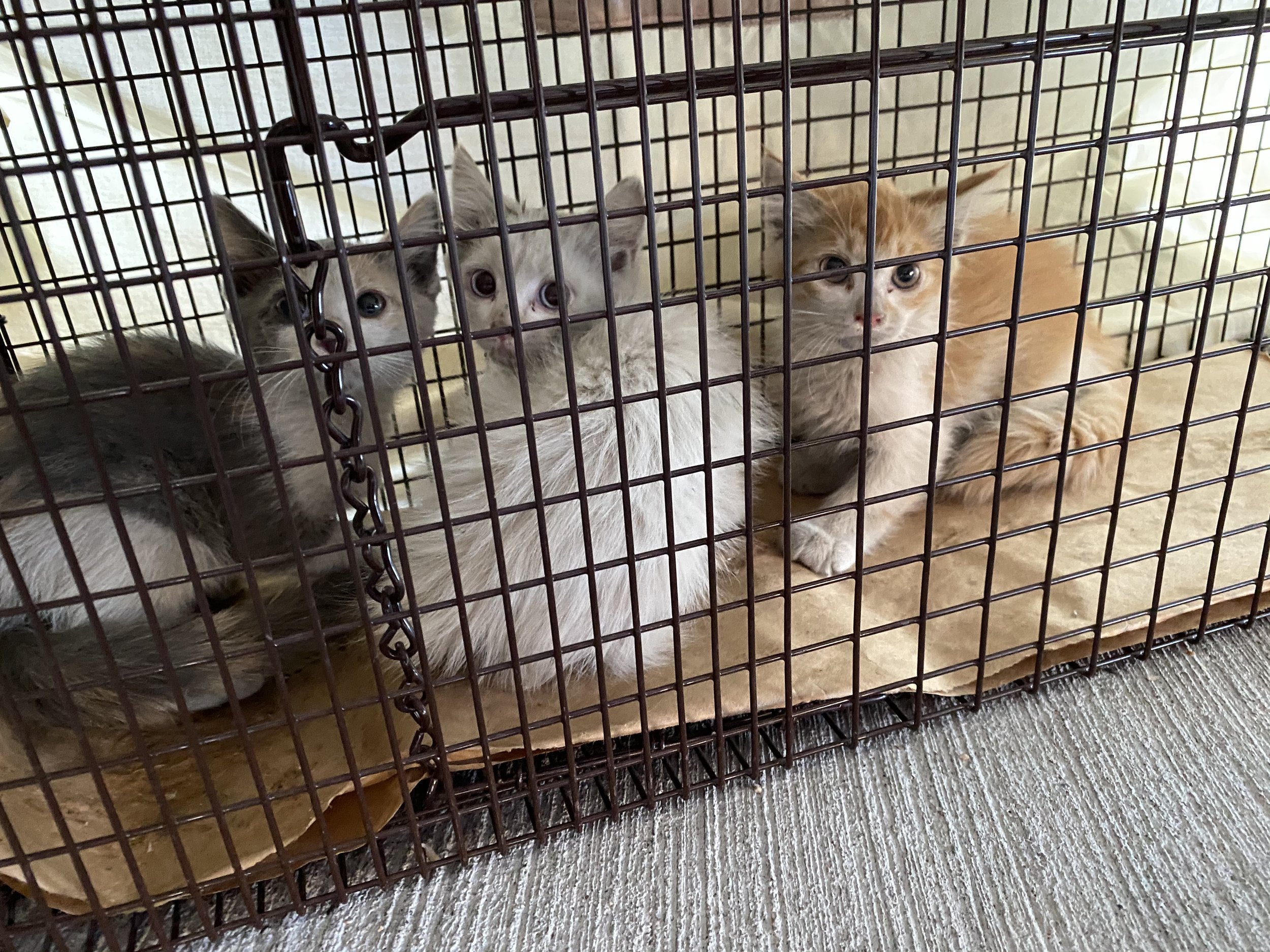Become a Trapper!
Follow our little crash course if you’d like to bring TNR to your community. We’ve tried to break everything down nicely to help others easily learn how to trap!
Lesson 1: What is TNR and Identifying a Cat Colony
TNR, or trap-neuter-return, is the humane solution to decreasing outdoor cat populations by trapping them in live humane traps, neutering or spaying the cat to prevent breeding, and returning them back to the location where they were trapped.
TNR ethically decreases the cat population since the cats are fixed and unable to reproduce. Without them constantly reproducing, the cat population plateaus and then will decrease once the cats pass away on their own. Some inhumane practices for cat populations is mass euthanasia which is unfortunate when the cats didn't ask to be outside and made to fend for themselves. It is an unfair response for a human problem. This is why it is so important to spay & neuter your pets and to keep them indoors!
The first step in starting TNR in your neighborhood is identifying a cat colony. A good tool is making a list of all the cats you see and to find out if there is someone in you neighborhood feeding them. The best way to start trapping cats is to get them on a feeding schedule. If they associate you with food it will be easier to get them trap trained. When I started TNR, I always fed my community cats around sundown since it was easier for the cats to make the connection: sundown=food.
Lesson 2: Placing the Trap
Once the cats are used to your feeding routine, there are many different traps out there but the best ones to use are two door traps like TruCatch or Tomahawk traps. You can line the bottom of the traps with newspaper or other paper material so that the cats aren’t stepping directly on the wire bottom. You want to avoid blankets or other similar items because this can cause issues for the veterinary professionals during the TNR surgery appointment. Place a small trail of wet food leading into the trap, with a final pile of food being at the very end of the trap past the trigger mechanism. You want to make sure the pile is past is so that the cat will step on the trigger mechanism in order to close the trap. If it’s placed too forward, the cat will eat the food by stretching their necks and avoiding the trigger plate.
If the cats are very wary of the trap, you might have to implement trap training with the colony. This consists of placing a trap near their feeding station for a couple days with food in it like mentioned above, but using a zip-tie to keep the trap open and prevent it from triggering.
Sorry! Our website is still under construction! Check back soon as we continue updating our site with more information!:)



